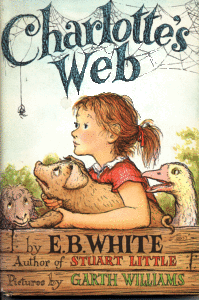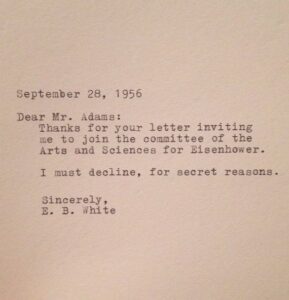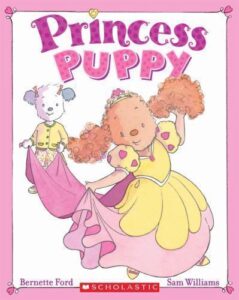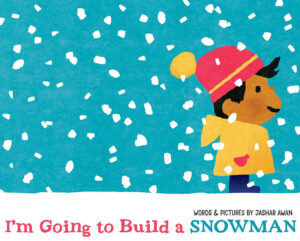Thanks to Joyce Uglow for another fine OPB interview. I’ll give a quick bio on our guest, author Shannon Stocker, and then Joyce will take the reins. Enjoy!
Shannon Stocker lives in Louisville, KY, with her best friend and husband of 20+ years (Greg) and their two beautiful miracles, Cassidy and Tye. They have a chatty parrot named Prozac (‘Zac’), a service dog named Sophie (Cassidy is a brain cancer warrior), a mini Aussie named Copper, a rescue kitty named Nugget, and a bearded dragon named Pepper. She is fully aware that she harbors too many animals. Outside of writing, she’s a singer, songwriter, pianist, guitarist, and actress. Shannon is represented by Allison Remcheck of Stimola Literary Studio.
JPU: Reinventing the Wheel: How Two Sisters Revolutionized the Wheelchair comes out in the summer 2026. Get a Hug releases in fall of 2026. Why are these two picture books important to get into the hands of kids?
SS: Hi, Joyce and Ryan! Thanks so much for having me on your blog. Reinventing the Wheel is another nonfiction picture book biography that’s dear to me, like Listen: How Evelyn Glennie, a Deaf Girl, Changed Percussion, because it shines a light on a fabulous invention for wheelchair users by Irish sisters, Ailbhe (pronounced AL-va) and Izzy Keane.

I spent two years in a wheelchair, and I remember only too well the looks of pity I’d get from others. At the time, I had actually been given two years to live; I didn’t know that I would regain my strength and walk again someday. Those two years taught me a great deal about myself, and they changed the way I approach everything—including my writing. I’m passionate about highlighting the beauty, the color, the possibility within different disability communities. We too often put boxes around that which is unknown to us. Kids in wheelchairs deserve more than that. They deserve our encouragement to break free from limits that others place on them and explore the vast realm of that which is possible.
To think of things that no one else has ever thought of before. That’s what Izzy and Ailbhe Keane did. As for Get a Hug, this book is everything that I first fell in love with about writing. It’s so much fun; it rhymes, it’s musical, it’s song-like, and it’s reminiscent of one of my favorite children’s authors—Sandra Boynton. It’s an ode to hugs, and everything a hug can be. I really wanted to write a book that exudes pure joy, and this is that book.

JPU: Ah…yes. It has been said that a little bit of joy can last a lifetime if practiced daily. As a former educator and aunt of young man who struggles with mobility, I can totally see why both of these books are important to you. It is crucial that people see themselves in books. Did your idea to acquisition process differ for these two picture books?
 SS: Reinventing the Wheel only went to my editor, Jess Garrison, at Dial/PRH. It really belonged with her. She did such a lovely job with Listen—my agent wanted to give her first crack this one, since it felt like a great follow-up. Obviously, I’m thrilled that Jess agreed!
SS: Reinventing the Wheel only went to my editor, Jess Garrison, at Dial/PRH. It really belonged with her. She did such a lovely job with Listen—my agent wanted to give her first crack this one, since it felt like a great follow-up. Obviously, I’m thrilled that Jess agreed!
Get a Hug got immediate interest from a few houses, but Celia Lee was effusive about it and immediately had a vision for the right illustrator (Lily Zhang, whose initial sketches are friggin’ adorable). Celia’s suggestions for edits rang true to me, and revisions just poured out so easily. When she made an offer, I knew it belonged with her at S&S!
JPU: I see that you and I are on the same page when it comes to the notion that artwork in a picture book has the power to draw in a book buyer. And I agree that the vision for the artwork is one of the keys to success. I also love a fun follow up and companion book. And so do kids! What would you like your readers to take away from these two stories?
SS: I’m hoping that both books are feel-good stories that bring joy. I’d love for Reinventing the Wheel to bring a sense of “normalcy” to wheelchairs. People who use them often don’t feel confined. Wheelchairs can allow for a sense of independence and freedom, and they deserve to be a reflection of the user, just as a pair of shoes or an outfit might be for those who don’t need a wheelchair. I’m hoping that Get a Hug winds up being one of those books that kids choose time and again from the shelf because it’s so fun to read!
JPU: YES! That re-readability IT factor brings it home time and time again. New ideas for books come to me when we venture out and about to see the world or travel the USA. Does inspiration strike you when you’re at home, on vacation, at work, or other places?
Inspiration strikes wherever I keep my eyes open (and sometimes when they’re closed)! I travel for my day job, so I’m always looking around at people: what they’re wearing, their tattoos, the way they interact with others. I especially try to interact with people in the disability community. If someone makes eye contact with me, I’ll smile and say hello. I frequently write down names and traits for characters in my novels, too. I actually just got an idea on our vacation a couple of weeks ago, when I met someone whom I believe will make a wonderful subject for my next nonfiction picture book biography. But I also get ideas right here at home from my kids all the time. Especially my son, whose imagination soars. Ideas are everywhere!
JPU: Isn’t it fun to notice and note people’s reactions to a smile or a nod? This brings me to wonder about your thoughts on back matter. Is there a certain back matter style or structure that resonates with you?
SS: For me, back matter should add something to the manuscript that didn’t belong in the manuscript but makes the story feel complete. It should complement the book. In Reinventing the Wheel, for example, I really wanted to get Izzy’s take on wheelchair etiquette. The book is not about wheelchair etiquette at all, but the topic came up multiple times in interviews with the sisters.
I think that people who don’t use wheelchairs sometimes feel uncomfortable around them—is it okay to draw attention to them? Should I help someone in a wheelchair, or should I not? Should I bend over when talking to them so we’re eye-to-eye? Sometimes people think they know the answers, but maybe they don’t. Back matter, to me, is a great opportunity to fill in some of the blanks, especially when a book is nonfiction or the author has a personal connection to the story, as I do.
JPU: Teachers love back matter, discussion guides, and extension activities. What are your thoughts on creating tools for teachers, care givers, and/or parents?
SS: Oh, this is such a great question, and I wish I had a better answer for you! Luckily, my houses have been pretty good about creating discussion guides and extension activities for my books. Unlike some other authors, I’m not a teacher, so I really rely on the ones who are to give me guidance and feedback. I was recently talking with a critique partner about this, and I think I’m going to reach out to the homeschooling community on Instagram for help on this with my novels. It’s not been my strength but is definitely an area where I’m looking to improve.
JPU: Speaking of strengths, I believe one of yours is message consistency. If you were on a panel of kidlit writers talking about platform, what would the audience members be surprised to hear you say?
SS: In many ways, I think books have a life of their own. I know a lot of authors who spend a great deal of time building their online presence, but some might be surprised to hear that I feel it barely moves the needle. I do pretty much the same thing for all my books, and some do much better than others. My suggestion would be that writers do the best they can with platform, but try not to stress about it too much.
JPU: I agree! We do not need to add any level of stress to our lives! How about your super writer power? Does it kick into gear when creating an intriguing title with hooks that attracts book buyers?
SS: I try not to write hooks for the purpose of making a sale. If you write for the market, or if you write with the trends, by the time you’re on submission, the market will have changed. The best writing superpower we all have, in my opinion, is the wealth of experiences we’ve collected through our lives.
- What connects with YOU?
- What story can only YOU write?
- How can you take YOUR passions, YOUR pain, YOUR tragedies, YOUR funny moments, YOUR experiences, and turn them into a story?
When books are filled with honesty, people really feel them to their core. That’s what gives them heart. We are never the only one to experience things. If we can use books to connect with other people, that’s when the magic happens.
JPU: Truth be told! When listening in on conversations between kids, (ok… eavesdrop) I pay attention to their interests. I’ve been known to lose myself in research because a news article spurs me to dig into a topic. What is the best rabbit hole your got lost in?
SS: LOL – I can think of a million bad rabbit holes that I’ve gotten lost in, but “best rabbit hole” is harder! I think my best rabbit hole is researching musicians with disabilities. I have ADHD, segmental neurofibromatosis, RSD/CRPS, and I’m a coma survivor. My daughter has brain cancer, and my son is neurodiverse. My parents were both hard-of-hearing, and my mom was blind for a period of time (retinitis pigmentosa).
But I’m also a musician (pianist, singer, songwriter, mediocre-at-best guitarist). For years, I’ve had to change my way of playing instruments or performing to get around my disability. For example, I had to start using a travel-sized guitar because a standard guitar presses against the tumors in my arm and causes pain. Everyone has obstacles in their life. The question is, how do you use those obstacles to succeed? How do you use your experiences to get ahead and pursue your passions? I’m fascinated by those questions.
JPU: Questions and curiosity fascinate me too. Is there a children’s book from your childhood that you wished you had written? What makes it special and unique?
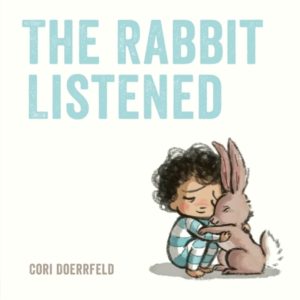 SS: I am one of the rare authors who didn’t read much as a child. I don’t remember ever being read to, either. But I did fall in love with picture books when I had my own children. A book I wished I’d written is The Rabbit Listened by Cori Doerrfeld. It’s so beautiful and perfect in its simplicity, and the message is crystal clear without being didactic. And those illustrations are adorable! To me, this book is like a great song with an earworm hook. It comes back to me over and over again. Another one like that is Guess How Much I Love You by Sam McBratney. That last line is so perfect! Who knows—maybe I have a thing for rabbits…
SS: I am one of the rare authors who didn’t read much as a child. I don’t remember ever being read to, either. But I did fall in love with picture books when I had my own children. A book I wished I’d written is The Rabbit Listened by Cori Doerrfeld. It’s so beautiful and perfect in its simplicity, and the message is crystal clear without being didactic. And those illustrations are adorable! To me, this book is like a great song with an earworm hook. It comes back to me over and over again. Another one like that is Guess How Much I Love You by Sam McBratney. That last line is so perfect! Who knows—maybe I have a thing for rabbits…
JPU: In many ways, kids today have it better than I did when I was a kid. Our library was quite a distance away, and we did not have many books. I’m glad to see that Oliver (one of my grandsons) is an avid reader. He may have picked up his soft spot for bunnies from reading books. There’s much to love about those fuzzy little friends. What is the best advice you can give to a new kidlit writer?
SS: FIND YOUR PEOPLE!!! Do not try to go this alone. The publishing journey is not for the faint of heart. It’s filled with rejection and self-doubt. It’s slow and painful. Find writers who are at the same stage you are, grow together, learn together, go to conferences together, critique one another’s work, and be there to cheer one another on along the way.
I remember wanting to find an established group that I could join, when I first got started. But honestly, that’s not the way it works. Established groups typically started and grew together, when everyone was a newbie. It sounds counter-intuitive, but that really is the best way to learn. Find people whose feedback and writing resonates with you and hold onto them for dear life. Then, ride the wave together.
JPU: Okay, Shannon–it’s time for the Speed Round. Here we go! What is your One Little Word for 2025?
SS: Compassion. It has never mattered more.
JPU: 100%! Are you a book buyer or library user?
SS: Both! Yay, libraries!! One of the best ways to support authors is to ask your library to carry their books. It’s free and oh-so-helpful!!
JPU: Sorry! That wasn’t a fair question. How about this choice? Do you prefer to write Picture Books or Young Adult?
SS: Can’t choose between my babies. They are apples and oranges, and I love them both.
JPU: Okay… Are you a “pantser” or a “plotter” when writing picture books?
SS: I used to be a pantser, but I’m more of a plotter now. I have to have a sense of where I’m going or I tend to flounder. That said, it’s not uncommon for my outline to change along the way. In fact, it always does.
JPU: Change can bring about golden nuggets. What are you working on now?
SS: I just finished a new picture book last week that I’m super excited about. It’s been spinning in my brain for years, and I finally made the time to just put my butt in a chair and finish writing it. And I LOVE it—it gives me all the feels. I’m also working on characters for my next novel.
As for revisions, I’m working on my next YA novel, The Roach King of Raleigh, which comes out early next year, and revisions of my upcoming picture books, Reinventing the Wheel, Get a Hug, and a couple more that have yet to be announced.
JPU: You get THE call from THE children’s book awards committee, what’s your reaction?
SS: Oh my gosh, this was the BEST call ever!! I actually missed the first call, but when they called the second time, I remember hearing, “Schneider Family Award committee,” and screaming. I asked them if I could gather my family before they said anything else and they all cracked up. I screamed to my whole family, put the phone on speaker, and then asked them to continue. It was chaos in the most wonderful, hysterical way. I sobbed through the whole call, feeling the most immense sense of gratitude and validation. Particularly because it was the Schneider Family Award, and I’m such a passionate advocate for the disability community. Any award would be meaningful, obviously, but this one was a bucket list item, for sure!
JPU: Thank you, Shannon. It was wonderful getting to know you and your new books. All the best to you. See you in the library and on the bookstore shelves!


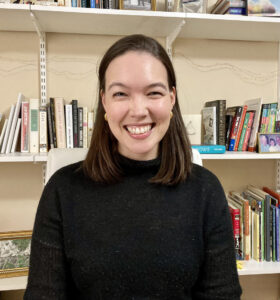 elcome to Celia Lee, an executive editor at Simon
elcome to Celia Lee, an executive editor at Simon 